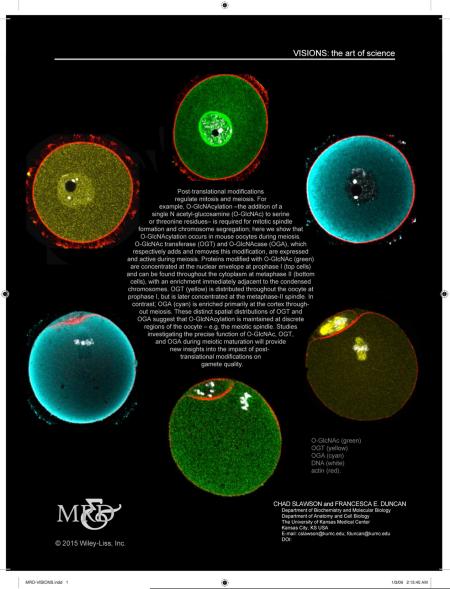Abstract
Post-translational modifications regulate mitosis and meiosis. For example, O-GlcNAcylation –the addition of a single N acetyl-glucosamine (O-GlcNAc) to serine or threonine residues– is required for mitotic spindle formation and chromosome segregation; here we show that O-GlcNAcylation occurs in mouse oocytes during meiosis. O-GlcNAc transferase (OGT) and O-GlcNAcase (OGA), which respectively adds and removes this modification, are expressed and active during meiosis. Proteins modified with O-GlcNAc (green) are concentrated at the nuclear envelope at prophase I (top cells) and can be found throughout the cytoplasm at metaphase II (bottom cells), with an enrichment immediately adjacent to the condensed chromosomes. OGT (yellow) is distributed throughout the oocyte at prophase I, but is later concentrated at the metaphase-II spindle. In contrast, OGA (cyan) is enriched primarily at the cortex throughout meiosis. These distinct spatial distributions of OGT and OGA suggest that O-GlcNAcylation is maintained at discrete regions of the oocyte – e.g. the meiotic spindle. Studies investigating the precise function of O-GlcNAc, OGT, and OGA during meiotic maturation will provide new insights into the impact of post-translational modifications on gamete quality.
Keywords: meiosis, oocyte, O-GlcNAc, post-translational modification




